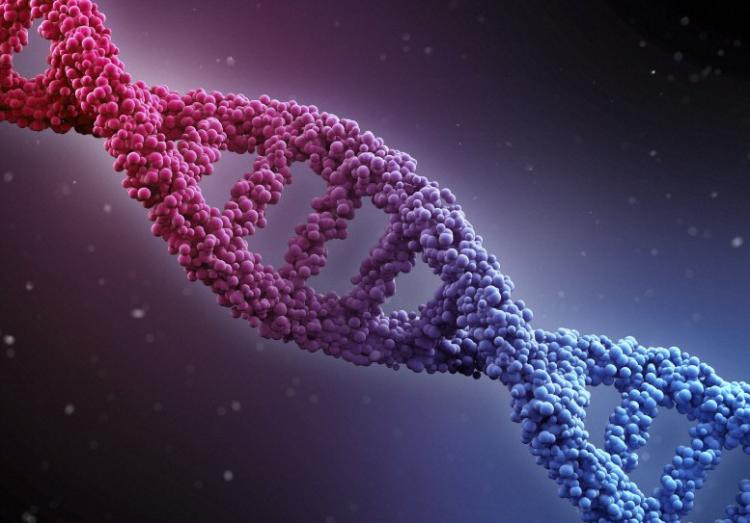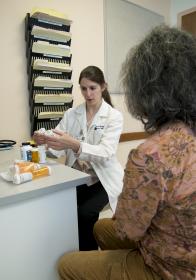As published in Dimensions Magazine - Spring 2020
New Genetic Targets
Activity of the poly(A) binding protein MSUT2 determines susceptibility to pathological tau in the mammalian brain. Wheeler JM et al. Science Translational Medicine, December 2019 // Jeanna Wheeler, Pamela McMillan, Timothy J. Strovas, Rebecca L. Kow, Patricia Szot, Linda Robinson, Chris Guthrie, Aleen Saxton, Nicole Liachko, Murray Raskind, Elaine Peskind, C. Dirk Keene, Thomas Bird, Brian Kraemer
In the wake of recent disappointments over clinical trials targeting amyloid plaque build-up in Alzheimer’s disease, researchers are focusing more attention on misfolded tau protein, another culprit in brain diseases that cause several forms of dementia. New research finds that targeting abnormal tau through the suppression of a gene called MSUT2 (mammalian suppressor of tauopathy 2) shows promise.

Brian Kraemer, PhD, Research Associate Professor, UW Division of Gerontology & Geriatric Medicine/ Leader, the Kraemer Laboratory.
Tau, like amyloid protein, is another substance that builds up in the brains of people developing Alzheimer’s disease, as well as types of frontotemporal degeneration. However, clinical trials targeting tau have been far less numerous in part because tau-targeted drugs have been hard to find.
In this study, researchers concluded that suppressing MSUT2 might protect people from Alzheimer’s disease, as long as the RNA binding protein PolyA Binding Protein Nuclear 1 (PABPN1) is not depleted by the treatment. MSUT2 and PABPN1 normally work together closely to regulate the biology of tau in the brain, so fooling with PABPN1 would have negative consequences. The researchers knocked out MSUT2 function in mice, thereby preventing the formation of the tau tangles that kill off brain cells. This intervention lessened learning and memory problems as well. While examining autopsy brain samples from Alzheimer’s patients, the researchers found that cases with more severe disease lacked both MSUT2 protein and its partner protein, PABPN1. This finding suggests that neurons that lose the MSUT2 -PABPN1 protein partnership may die off.
Moreover, mice lacking MSUT2 but possessing a normal complement of PABPN1 were strongly protected against abnormal tau accumulation and the resulting brain degeneration. The researchers concluded that the key to helping people with abnormal tau buildup is blocking MSUT2 while preserving PABPN1 activity.
Medications and Brain Health
Beliefs about benefits and harms of medications and supplements for brain health. Marcum et al. Preventative Medicine Reports, January 2020 // Zachary Marcum, David Barthold, Oleg Zaslvasky, Eric Larson, Shelly Gray
In a study published in January, researchers published a survey to better understand the general public’s perceptions of medications and supplements for brain health and dementia risk. The researchers received 1,661 responses to the web-based survey, which largely came from white women between the ages of 51 and 70.
The survey asked questions about the relevance of vitamin E, ginkgo biloba, hormone treatments, fish oil, statins, and sleep aids to brain health. A substantial number of people viewed the listed supplements positively, but the scientific evidence does not indicate that any are valid treatments for dementia. The supplements all have shown promising effects in epidemiological evidence. However, every single supplement listed in this survey has been rigorously tested in randomized clinical trials, and none of them produce any differences in reducing the development of dementia when compared to the use of a placebo. Further research is needed for scientists to understand the circumstances, doses, and types of drugs in this class that can be helpful or dangerous.
The researchers behind the survey believe that healthcare professionals and patients should improve efforts to inform the general public about supplements, pharmaceuticals, and brain health, and the Memory and Brain Wellness Center will continue to deliver important updates to our patients and readers.
Read: Fish Oil and Seafood for Brain Health: What’s the Evidence? by Dr. Angela Hanson, MD
Risk and Resilience
Exceptionally low likelihood of Alzheimer’s dementia in APOE2 homozygotes from a 5,000-person neuropathological study. Reiman EM et al. Nature Communications, February 2020 // C. Dirk Keene, Eric B. Larson, Paul K. Crane
Most people with Alzheimer's-type dementia have the late-onset form of the disease, in which symptoms become apparent in the mid-60s or later. The causes of late-onset Alzheimer's are not yet completely understood, but they likely include a combination of genetic, environmental, and lifestyle factors that affect a person's risk for developing the disease. Researchers have not found a specific gene that directly causes the late-onset form of the disease. However, variations in the apolipoprotein E (APOE) gene on chromosome 19 do influence risk, but only for people of European ancestry.
Everyone has two copies of the APOE gene, and each copy can be one of three different variants, called alleles (E2, E3, or E4). In the human populations studied so far, each allele seems to produce a different level of risk for a person developing Alzheimer’s disease, with the E4 allele linked to higher risk, and the E2 allele associated with lower risk. Having two copies of E4 puts someone at higher risk than only having one. The purpose of this study was to see if the protective effects of the E2 allele are also additive – whether two copies of E2 are better than one.
Researchers looked at the odds that someone with a combination of different APOE alleles would develop Alzheimer’s disease vs. the odds that they would not. They created odds ratios to measure the likelihood of an Alzheimer’s outcome with different genetic combinations in a pool of 5,000 clinically diagnosed and autopsy verified Alzheimer’s dementia cases and controls.
The study found that the odds of developing dementia due to Alzheimer’s disease for individuals with two copies of E2 was lower than for those with two copies of E3 or one copy of E2 and one copy of E3, and their odds were much lower compared to those with two copies of E4. When the researchers narrowed the analysis to generate odds ratios only from individuals who had definitive autopsy confirmation of Alzheimer’s disease, the trends for the protective effect of E2 were even stronger. This research highlights the importance of discovering how different variants of the APOE gene influence the development of Alzheimer’s disease. Finding and targeting the factors connected to this influence could be groundbreaking for the treatment and prevention of the disease.
Alzheimer’s and Epilepsy
Loss of presenilin 2 age-dependently alters susceptibility to acute seizures and kindling acquisition. Beckman M et al. Neurobiology of Disease, December 2019 // Megan Beckman, Kevin Knox, Zachery Koneval, Carole Smith, Suman Jayadev, Melissa Barker-Haliski
Patients living with Alzheimer’s disease show higher rates of spontaneous seizures than the general population, but people with rare early-onset Alzheimer’s disease are at particularly high risk. One study reported that 29% of patients affected by a mutation in the presenilin 2 (PSEN2) gene have at least one seizure within five years of diagnosis. So, researchers want to understand how alterations in normal function of this Alzheimer’s risk gene impacts susceptibility to seizures across a lifespan.
The researchers studied mice lacking a functional PSEN2 gene as their preclinical model system. In one part of their study, they used corneal kindling, a method to trigger chronic brain hyperactivity associated with epilepsy (a state of increased susceptibility to seizures) in the mouse brain. The kindling model is often used to study epilepsy and is commonly used to discover antiseizure medications.
The investigators found that younger, but not older, PSEN2 knockout mice took significantly longer than normal mice to develop a “kindled state,” meaning that they took longer to develop “epilepsy”. However, once the young mice had established an epileptic state, their seizures were of longer duration than those of aged mice. This finding suggests that there is an age-related change in the brain that makes early life seizures more severe in mice with loss of normal PSEN2 function.
This study demonstrates that the loss of normal PSEN2 function may contribute to formation of an epileptic network in the brain and alter the risk for acute seizures seen in patients with Alzheimer’s disease. This new collaboration between investigators with expertise from the Alzheimer’s and epilepsy fields creates new opportunities to identify novel molecular targets for seizures in Alzheimer’s disease, as well as to clarify the mechanisms of seizures in people living with dementia.
____
*Only UW-affiliated researchers are listed








